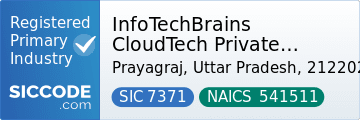In today’s fast-paced business environment, the need for seamless integration between various software systems has become paramount. ERPNext, an open-source Enterprise Resource Planning (ERP) solution, is designed to streamline business processes and enhance operational efficiency. However, to fully leverage its capabilities, organizations often seek to integrate ERPNext with other software applications.
This integration allows for the synchronization of data across different platforms, enabling businesses to make informed decisions based on real-time information. Integrating ERPNext with other software involves connecting it with applications that serve different functions within an organization, such as accounting, customer relationship management (CRM), e-commerce, and project management tools. This interconnectedness not only improves data accuracy but also reduces the time spent on manual data entry and reconciliation.
By understanding the nuances of these integrations, businesses can create a cohesive ecosystem that enhances productivity and drives growth.
Key Takeaways
- Integration of ERPNext with other software is essential for streamlining business processes and improving overall efficiency.
- Benefits of integrating ERPNext with other software include improved data accuracy, reduced manual data entry, and enhanced decision-making capabilities.
- Common challenges in integrating ERPNext with other software include data synchronization issues, compatibility issues, and potential security risks.
- Best practices for integrating ERPNext with other software include thorough planning, clear communication, and regular testing to ensure smooth integration.
- Integration of ERPNext with accounting, CRM, e-commerce, project management, inventory management, and human resources software can greatly enhance business operations and productivity.
- Successful case studies of integrating ERPNext with other software demonstrate improved workflow automation, better data visibility, and increased customer satisfaction.
Benefits of Integrating ERPNext with Other Software
The integration of ERPNext with other software solutions offers a multitude of benefits that can significantly impact an organization’s performance. One of the primary advantages is the enhancement of data visibility across departments. When different software systems communicate effectively, stakeholders can access up-to-date information, leading to better decision-making and strategic planning.
For instance, sales teams can view inventory levels in real-time, allowing them to manage customer expectations more effectively. Moreover, integrating ERPNext with other applications can lead to improved operational efficiency. By automating data transfers between systems, organizations can minimize the risk of human error and free up valuable resources.
Employees can focus on higher-value tasks rather than spending time on repetitive data entry. This not only boosts productivity but also fosters a culture of innovation as teams are empowered to concentrate on strategic initiatives rather than mundane administrative tasks.
Common Challenges in Integrating ERPNext with Other Software
Despite the numerous benefits, integrating ERPNext with other software is not without its challenges. One common hurdle is the complexity of data mapping between different systems. Each software application may have its own data structure and format, making it difficult to ensure that information flows seamlessly from one platform to another.
This complexity can lead to data inconsistencies and errors if not managed properly. Another significant challenge is the potential for resistance from employees who may be accustomed to existing workflows. Change management becomes crucial in this context, as employees need to be trained on new processes and systems.
If not addressed adequately, this resistance can hinder the successful implementation of integrations and negate the anticipated benefits. Organizations must prioritize communication and training to ensure a smooth transition and foster a culture that embraces change.
Best Practices for Integrating ERPNext with Other Software
To navigate the challenges associated with integrating ERPNext with other software, organizations should adopt best practices that facilitate a successful integration process. First and foremost, conducting a thorough needs assessment is essential. Understanding the specific requirements of each department and how they interact with ERPNext will help identify the most critical integrations needed for optimal performance.
Additionally, leveraging middleware solutions can simplify the integration process by acting as a bridge between ERPNext and other applications. Middleware can help standardize data formats and streamline communication between systems, reducing the complexity of direct integrations. Furthermore, organizations should prioritize ongoing monitoring and maintenance of integrations to ensure they continue to function effectively as business needs evolve.
Integration of ERPNext with Accounting Software
Integrating ERPNext with accounting software is one of the most impactful integrations for businesses seeking to enhance their financial management processes. By connecting these two systems, organizations can automate financial transactions, synchronize accounts payable and receivable, and generate real-time financial reports. This integration eliminates the need for manual data entry, reducing errors and ensuring that financial information is always up-to-date.
Moreover, an integrated accounting system allows for better cash flow management. With real-time visibility into financial data, businesses can make informed decisions regarding budgeting and forecasting. For instance, sales teams can access financial reports directly from ERPNext, enabling them to understand profitability metrics and adjust their strategies accordingly.
This holistic view of financial health empowers organizations to optimize their operations and drive sustainable growth.
Integration of ERPNext with CRM Software
Unified View of Customer Interactions
By connecting ERPNext and CRM systems, businesses can create a unified view of customer interactions across various touchpoints. This integration allows sales teams to access customer data stored in ERPNext while managing leads and opportunities within the CRM system.
Streamlined Sales Processes
Integrating ERPNext with CRM software enables organizations to streamline their sales processes. For example, when a sale is made in the CRM system, relevant information such as inventory levels and order fulfillment status can be automatically updated in ERPNext.
Real-time Synchronization
This real-time synchronization ensures that sales teams have accurate information at their fingertips, allowing them to respond promptly to customer inquiries and improve overall service delivery.
Integration of ERPNext with E-commerce Platforms
In an era where online shopping has become increasingly prevalent, integrating ERPNext with e-commerce platforms is essential for businesses looking to optimize their online sales operations. This integration allows for seamless synchronization of product listings, inventory levels, and order processing between the e-commerce site and ERPNext. As a result, businesses can ensure that their online storefront reflects accurate stock levels and pricing information.
Moreover, integrating ERPNext with e-commerce platforms enhances the customer experience by providing real-time order tracking and updates. Customers can receive notifications about their order status directly from the e-commerce site, reducing inquiries related to order fulfillment. Additionally, businesses can leverage insights gained from e-commerce transactions to inform marketing strategies and inventory management decisions, ultimately driving sales growth.
Integration of ERPNext with Project Management Software
For organizations that rely heavily on project management tools, integrating ERPNext with project management software can lead to improved collaboration and efficiency in project execution. This integration allows project managers to access real-time data related to resource allocation, budget tracking, and project timelines directly within ERPNext. As a result, teams can make informed decisions based on accurate information without having to switch between multiple applications.
Furthermore, integrating these systems enables better communication among team members working on various projects. For instance, when project milestones are achieved or deadlines are adjusted in the project management tool, relevant updates can be automatically reflected in ERPNext. This synchronization fosters accountability and transparency within teams, ensuring that everyone is aligned toward common goals.
Integration of ERPNext with Inventory Management Software
Effective inventory management is crucial for businesses seeking to optimize their supply chain operations. Integrating ERPNext with inventory management software allows organizations to gain real-time visibility into stock levels, reorder points, and supplier information. This integration ensures that businesses can maintain optimal inventory levels while minimizing carrying costs.
Moreover, an integrated inventory management system enables organizations to automate reordering processes based on predefined thresholds. When stock levels fall below a certain point in ERPNext, automatic purchase orders can be generated and sent to suppliers without manual intervention. This level of automation not only reduces the risk of stockouts but also streamlines procurement processes, allowing businesses to focus on strategic initiatives rather than day-to-day operational tasks.
Integration of ERPNext with Human Resources Software
Integrating ERPNext with human resources (HR) software is essential for organizations looking to enhance their workforce management capabilities. This integration allows HR teams to synchronize employee data such as payroll information, attendance records, and performance metrics directly within ERPNext. As a result, businesses can streamline HR processes while ensuring compliance with labor regulations.
Additionally, an integrated HR system enables organizations to gain insights into employee performance and engagement levels. By analyzing data from both ERPNext and HR software, businesses can identify trends related to employee turnover or productivity issues. This information empowers HR teams to implement targeted initiatives aimed at improving employee satisfaction and retention rates.
Case Studies of Successful Integration of ERPNext with Other Software
To illustrate the tangible benefits of integrating ERPNext with other software solutions, several case studies highlight successful implementations across various industries. For instance, a manufacturing company integrated ERPNext with its accounting software to automate financial reporting processes. As a result, the organization reduced its month-end closing time by 50%, allowing finance teams to focus on strategic analysis rather than manual reconciliations.
Another case study involves a retail business that integrated ERPNext with its e-commerce platform. By synchronizing inventory levels in real-time, the company was able to reduce stockouts by 30% while improving customer satisfaction scores significantly. Customers appreciated receiving timely updates about their orders and were more likely to return for future purchases.
These case studies demonstrate that when organizations take a strategic approach to integrating ERPNext with other software solutions, they can achieve substantial improvements in efficiency, accuracy, and overall business performance. As companies continue to navigate an increasingly complex digital landscape, embracing these integrations will be key to staying competitive and driving growth in the years ahead.
FAQs
What is ERPNext?
ERPNext is an open-source, web-based enterprise resource planning (ERP) software that helps businesses manage their processes across various functions such as accounting, sales, purchasing, inventory, and more.
What does integration of ERPNext with other software mean?
Integration of ERPNext with other software refers to the process of connecting ERPNext with other applications or systems to enable seamless data flow and communication between them.
Why is integration of ERPNext with other software important?
Integration of ERPNext with other software is important as it allows businesses to streamline their operations, improve efficiency, and make better-informed decisions by having all their systems work together and share data in real-time.
What are some common software that ERPNext can be integrated with?
ERPNext can be integrated with various software such as CRM systems, e-commerce platforms, payment gateways, shipping and logistics software, business intelligence tools, and more.
How is integration of ERPNext with other software achieved?
Integration of ERPNext with other software can be achieved through various methods such as using APIs (Application Programming Interfaces), webhooks, middleware platforms, or custom development.
What are the benefits of integrating ERPNext with other software?
Some benefits of integrating ERPNext with other software include improved data accuracy, reduced manual data entry, enhanced productivity, better decision-making, and a more cohesive and connected business ecosystem.











